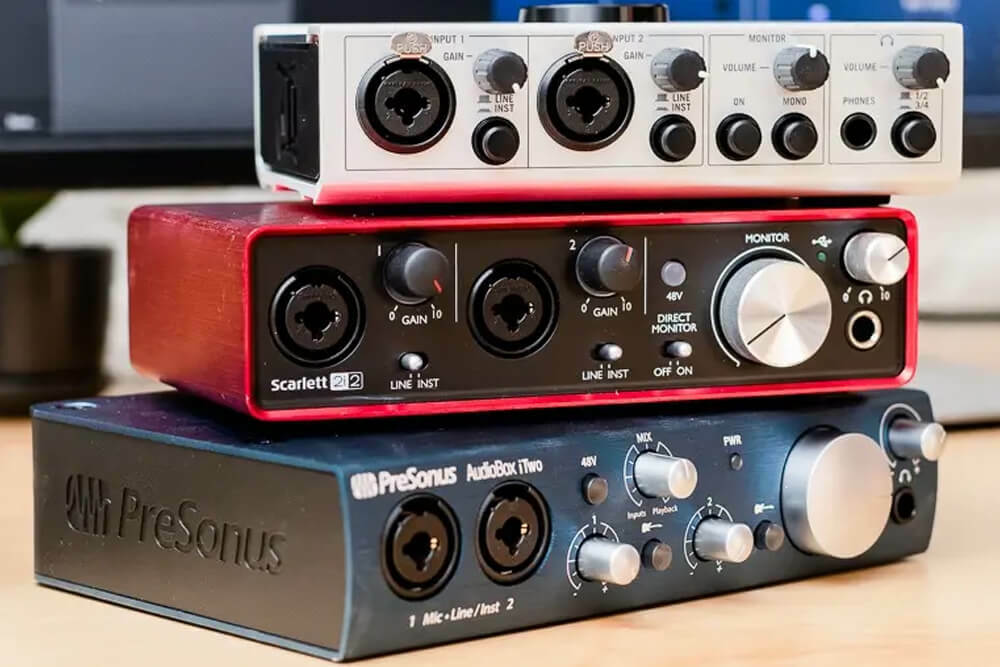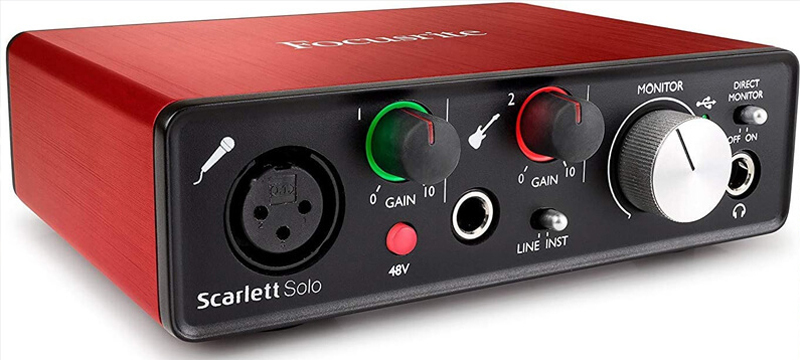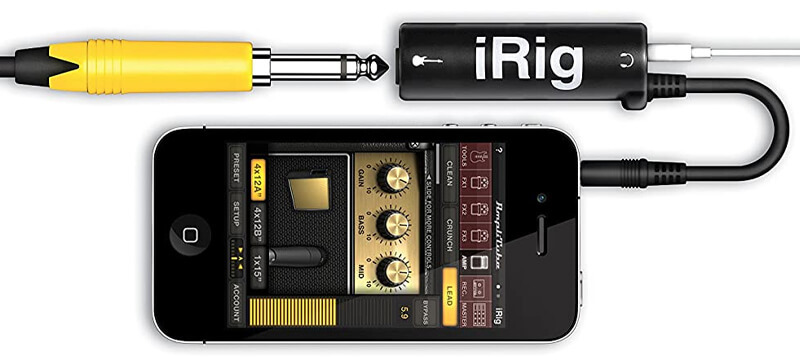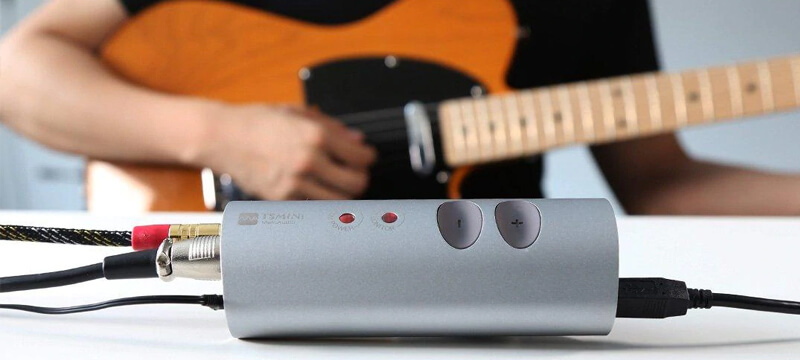
What is an Audio Interface?
An audio interface is a device that converts audio signals between analog signals and digital signals.
In plain English that means, it converts incoming audio signals (analog waveform) from a condenser microphone or an electric guitar into a digital signal (zeros and ones) that your computer (or mobile devices) can process.
And vice versa, converting digital signals from your computer into analog signals that can be amplified through a speaker or into a mixer, recorder, etc.
But why do you need an audio interface when your computer or mobile phones already have their built-in input microphones and output speakers?
While an electronic device like a computer, ipad or a mobile phone do come with built-in audio features, they’re made for functionality, not quality.
Therefore, when you need to have good audio quality for purposes such as audio recording (podcast, musical instruments), live streaming or attending an online music lesson, you’ll need an audio interface.
So today we shall be talking about a few examples of audio interfaces and what you should look out for when buying one that meets your needs.

Focusrite Scarlett Solo
As trendy as it’ll ever get, self made videos are being created by the second these days. And if this is you, all you need is something like the Focusrite Scarlett Solo.
A simple interface that allows you to plug in your guitar and a mic, and produce professional sounding quality at your fingertips.
For those of you who are still trying to wrap your head around how an audio interface works, the video is a great demonstration of exactly what interfaces do.
Focusrite Scarlett Solo
But please be aware that your recording environment plays a big part too. If you’re living next to a train station, then you can expect to have all the hustling and bustling noises being recorded as well.
So, be warned!

M-Audio 192|14
Another example of an audio interface is the M-Audio 192|14.
The main difference between the M-Audio and the Focusrite is that you can now handle more inputs. For up to 4 input slots where you can connect your microphones to, as well as 2 inputs for instruments as opposed to just the 1 input on the Focusrite Scarlett Solo.
M-Audio 192|14
By now you might be saying but you’re just a beginner, do you really need to spend all that money on these audio interfaces?
Well, first of all, these audio interfaces are not as expensive as you think. But at the same time, there’re also cheaper alternatives which produce just as reliable a quality, but don’t make a dent in your wallet.

iRig 1
For instance there’s the popular iRig, where you can simply plug your guitar into your phone via a small iRig device. Obviously the conversion quality will not be as good as the bigger units. But it’s definitely still a lot better than the default function that came with your computer.

Melo Audio TS Mini
There’s also the Melo Audio TS Mini, which does produce a very decent audio conversion quality at a very affordable price.
Melo Audio TS Mini
Melo Audio TS Mini also has a midi output that also allows you to hook up a midi controller to add that additional level of creativity to your music.
After looking at the above examples, there are a few things you should be aware of when buying your audio interface.
Bitrates
Bit depth represented by bitrates tells you how ‘smooth’ the sound is going to be. Think of it as printing a picture, and pixels are the equivalent of bitrates, the larger the number the smooth your graphics.
As a reference, 16 bit is the standard for CD quality, while a 24 bit will produce an even cleaner, more accurate sound.
Sampling Rate
Another spec to look out for on an audio interface is its sampling rate.
Sampling rates are measured in hertz (kHz), the number tells you the amount of sound samples taken at a specific time period (usually in seconds).
It is said that humans can perceive sound in the 44.1kHz range. And if you look at the specs on a lot of audio devices, this would be the basic for most of them.
Some standard sampling rates include 44.1kHz, 48kHz, 88.2kHz,96kHz, 176kHz and 192kHz, the higher the better.
But to be perfectly honest, it’s very unlikely that you’ll be able to tell the difference between 44.1kHz and 48kHz or 176kHz and 192kHz unless you’ve been trained to do so.
Latency
Latency is the amount of time it takes for sound to travel from the source to your ears. In audio recording terms, it’s how long your audio interface takes to convert. If the latency rate is too high, it’ll sound like a delay effect.
The best latency rate is as close to 0 as you possibly can. But typically an acceptable latency rate is about 8-12 millisecond.
Hopefully the above introduction to audio interfaces helped clear up some confusions you may have had and you now find it easier to look for what you need.
Rock on nn/,





